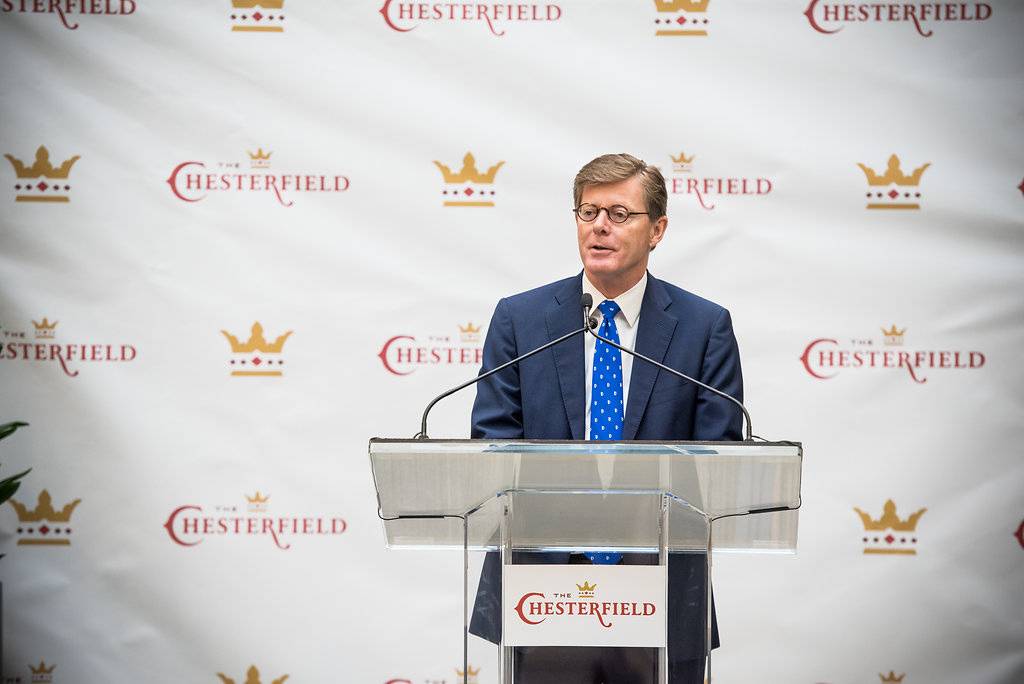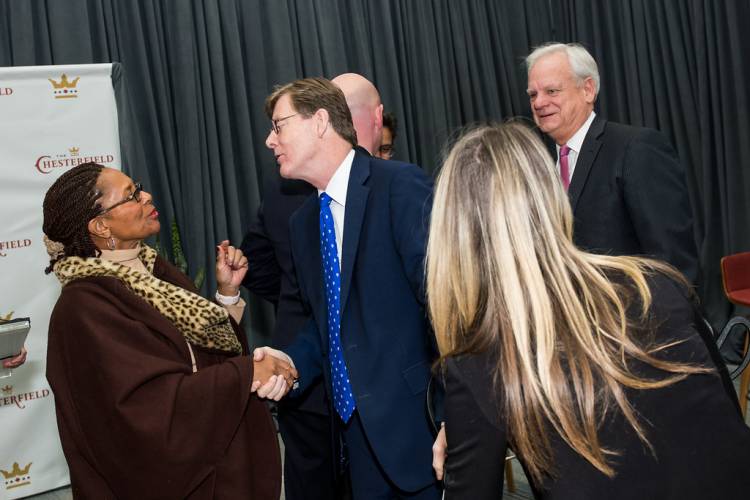President Price Helps Open Renovated Chesterfield Building for Life Science Research
Duke's lease expands university investment in Durham downtown

The next large step in Duke and Durham’s partnership for growing research in the life sciences and technology officially opened this week.
At a ceremony reopening the Chesterfield, a 286,000-square foot property on Main Street originally built for the manufacturing of Leggett & Myers cigarettes, Duke President Vince Price joined city and business leaders celebrating the building’s conversion into a modern facility focusing on life science research that is likely to produce new products that can directly benefit society.
Duke is an institutional sponsor of the renovation process and is leasing about 100,000 square feet in the building for research labs. Several Duke labs have already made the transition to the building.
 “This historic building, which stood vacant and menacing for decades, today anchors a thriving innovation and bioengineering community in the heart of Durham,” Price said at the ceremony. “The research that goes on here – in the very real estate that once housed the tobacco companies that drove Durham’s first economic boom – is already helping to revitalize the region and improve or save countless lives.
“This historic building, which stood vacant and menacing for decades, today anchors a thriving innovation and bioengineering community in the heart of Durham,” Price said at the ceremony. “The research that goes on here – in the very real estate that once housed the tobacco companies that drove Durham’s first economic boom – is already helping to revitalize the region and improve or save countless lives.
“I am very proud that Duke has been a partner and a catalyst in the development of downtown Durham from the beginning, thanks to the visionary leadership of Tallman Trask and Scott Selig,” Price said. “We recognize that our location is one of our great advantages – the resurgence of Durham has allowed us to forge new partnerships with private sector and non-profit research organizations, partnerships that are providing new pathways to commercialization for Duke researchers and faculty.”
The Duke investment in the Chesterfield is part of an overall university strategy to strengthen Durham as a place for innovation and entrepreneurship. Nearly 3,500 university employees now work in the downtown area, from Duke University Press staff at Brightleaf Square to researchers in the Duke Clinical Research Institute at Durham Centre on Morgan Street.
“The fact is, Duke wouldn’t be Duke without Durham, and Durham wouldn’t be Durham without Duke,” Price said. “We are so very proud of this city and all that it has become, and we look forward to a very exciting future here.”
The Chesterfield has been vacant since 1999. It was renovated by Wexford Science+Technology.